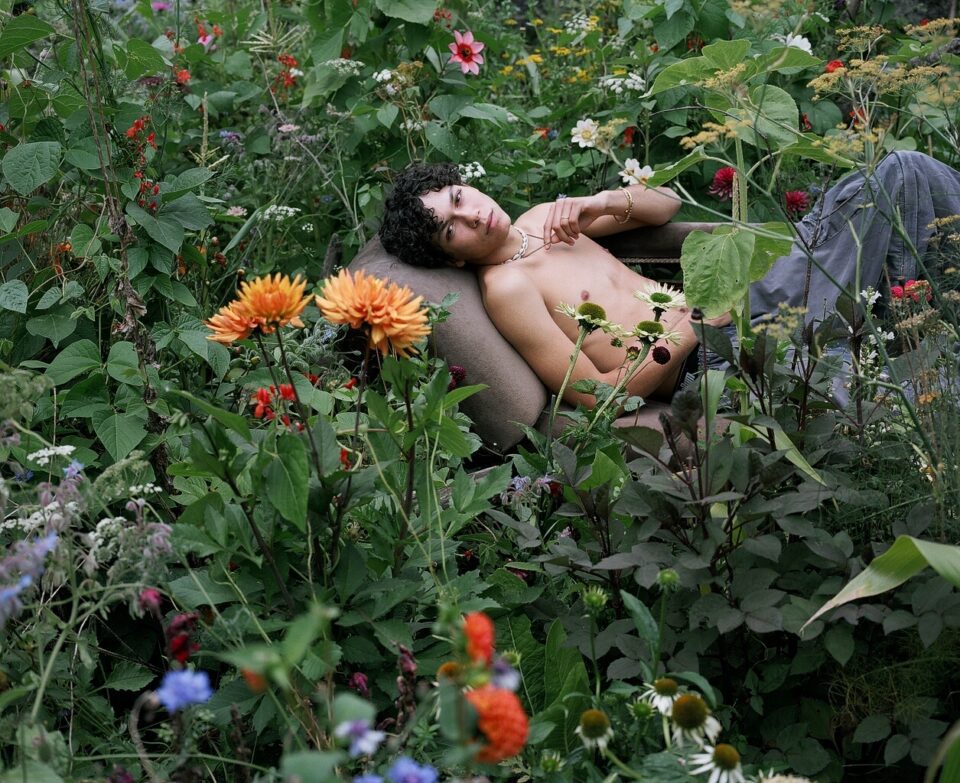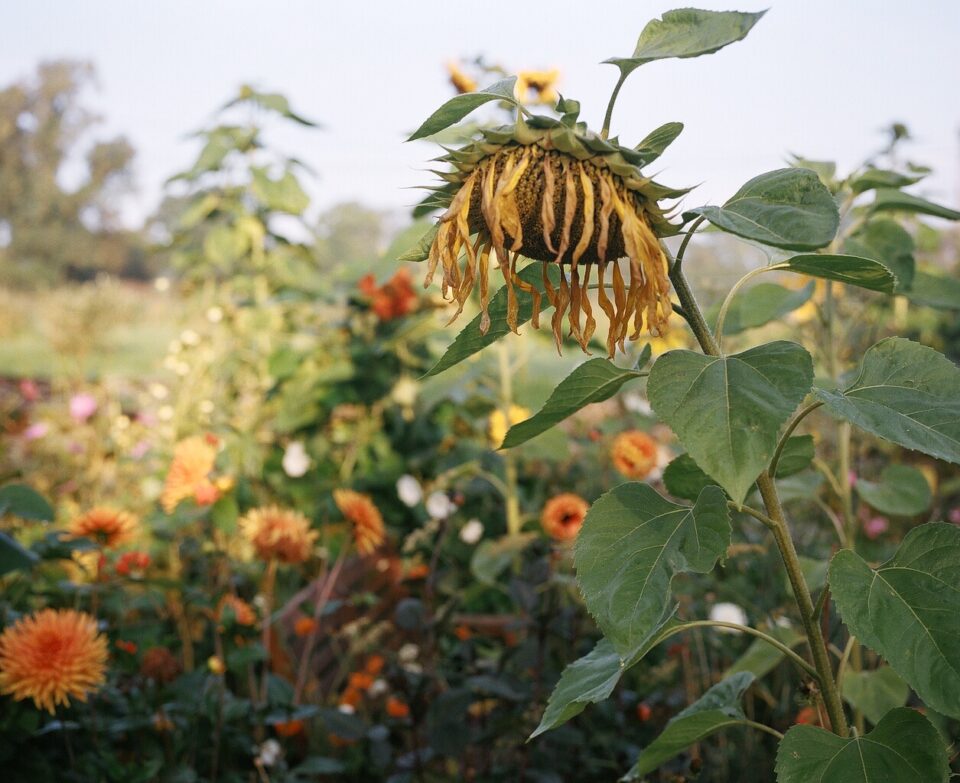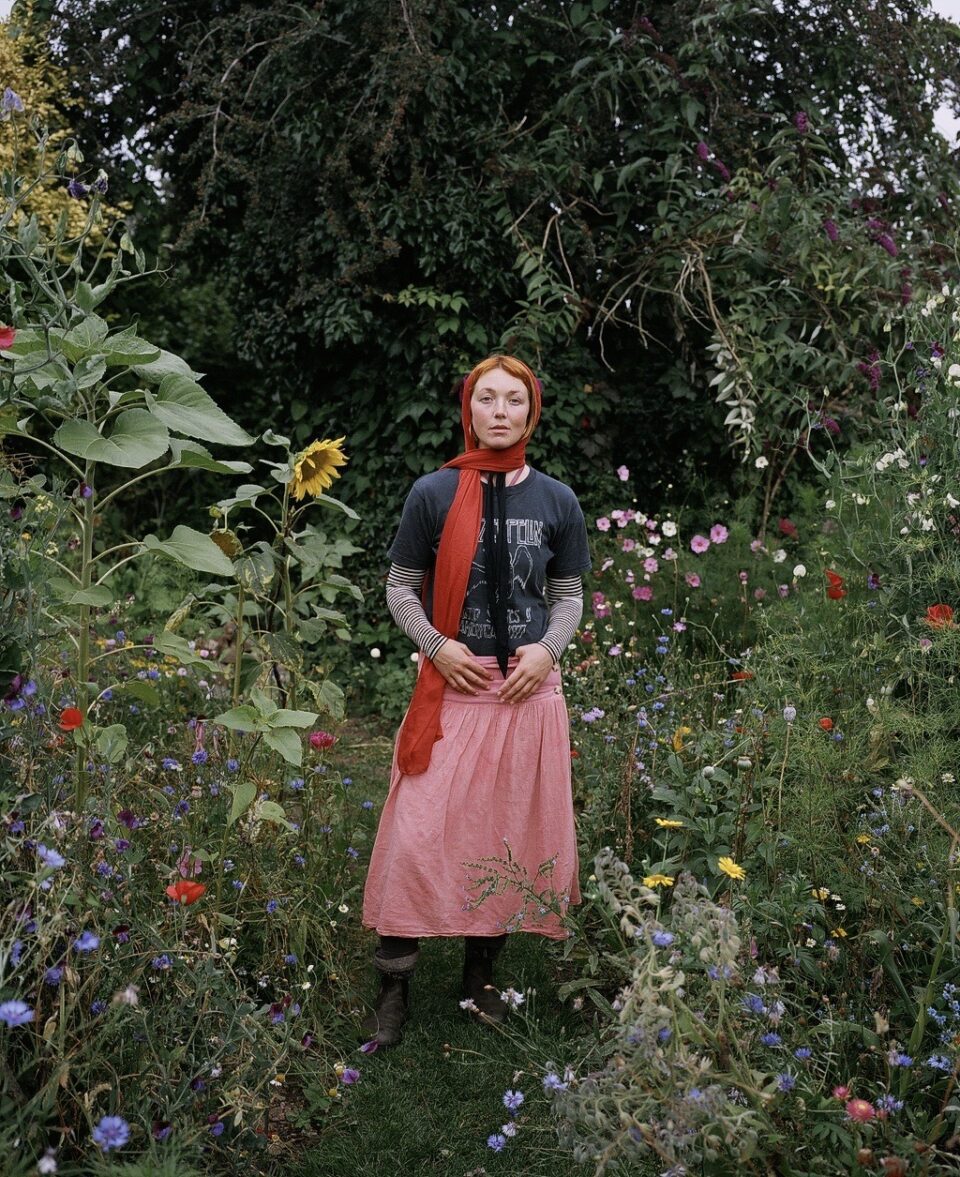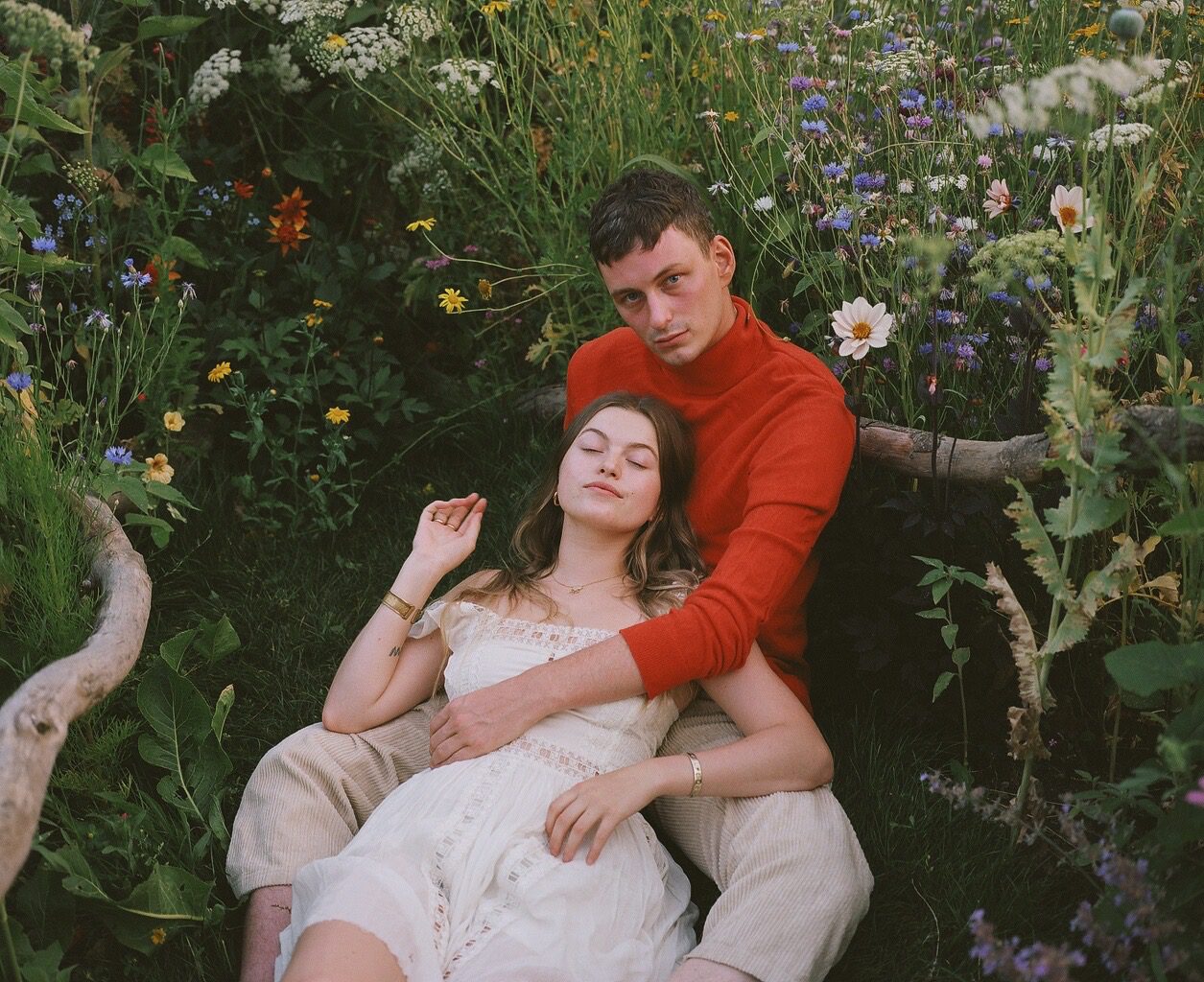Photographer Sian Davey’s (b. 1964) garden is an oasis. The haven of wildflowers, grown from locally sourced bulbs, began as a project with her son during the pandemic. It has since become the backdrop of countless portraits of friends and neighbours. They are profoundly intimate, taken alone and in groups, and in various stages of undress. The result of this effort is The Garden, a photographic series that has captivated audiences since it was published last year, exhibited at The Photographer’s Gallery, London, Martin Parr Foundation, Bristol and Prix Pictet. Now, it is on display at Stills Gallery as part of Edinburgh Arts Festival 2025. The collection welcomes visitors into Davey’s deeply personal work, which explores the connection between humanity and the environment. We spoke to the artist to hear about the process of cultivating the garden, the inspiration behind her photos and the transformative power of nature.

A: How did you first begin working behind the lens?
SD: It didn’t happen until I was in my mid-40s, before that I was a psychotherapist. I went to a Louise Bourgeois retrospective at Tate, and it felt like a spiritual download, almost as if her subconscious world had collided with mine. When I came out of the show I burst into tears and announced to myself “I’m now going to be a creative.” Two years later, the camera found me, and I started making work as an artist.
A: You mention that before this point, you worked as a psychotherapist. Do you find that this is something that influences your photography?
SD: My philosophy in life is that nothing is separate. Everything is connected, always. You keep what you need from the past and bring that into the future. Ideally, you take the meaningful experiences forward, and you leave what you no longer need behind. So, all that training and years of in-depth work with clients, as well as personal therapy, is all woven into my work now. It is the same as my childhood, which was extremely difficult and deeply problematic in many ways, that is now a huge influence on my art. I’m just trying to understand what it means to be here, like everyone else. We’re all working out what it means to be human. If you go deeper into that territory, life becomes more interesting.

A: The portraits in this series have an incredibly intimate and personal feel to them. What’s your process of capturing the perfect instant?
SD: I don’t have a strategy, I’m just in the moment with my sitters. It’s an act of mindfulness, holding witness to their lives and noticing how our relationships develops minute by minute. We’re building a relationship, it’s an intuitive process. I’ve acquired skills along the way through my time as a psychotherapist, and my work on myself, as well as through the teachings of great Tibetan Buddhist teachers – I now trust my intuition. I can feel how it is to be with a person. The camera’s intrusive, as we know, so I’m always talking when I’m photographing. It’s a way to help someone to feel at ease, so they can be who they really are.
A: Take us back to when you first began transforming your garden. Where did the idea come from?
SD: It started five years ago, around the beginning of the pandemic. I was navigating a personal crisis that had ruptured my world. I was at the kitchen table and my son, Luke, suggested we cultivate the garden. It has a low two-and-a-half-foot wall going around it and is visible to the public, but it had been left abandoned for about four years. I’d been busy with family and work, so the garden was just never a priority. Luke said “why don’t we make it so beautiful that people want to come and be photographed by you in it.”

A: How did the fact that it was a collaboration with your son shape the project?
SD: Luke was pivotal. It was his initial vision, and it aligned perfectly with mine. It was instant, almost like the Louise Bourgeois moment. Something just drops into place, and you say yes, without any attachment to ambition, without asking: where is this going? How will it be received? How will we fund it? The idea was just to make something absolutely incredible. That was it. We did lots of serious research together to make sure that we were doing things properly. If you treat nature nicely, it’ll treat you the same way. So there were things we had to understand, like biodiversity, soil composition, when to plant certain flowers and how to grow bio-dynamically. We started on the project in the middle of winter, and for three years we were out there seven days a week, creating this space. There was barely any grass, my son planted flowers everywhere from thousands of seeds, he was anarchic in his approach. It became a completely immersive space – you were surrounded by pure colour and the sound of humming bees.
A: What was the response to the garden?
SD: To walk into the garden, when the flowers were open and in full bloom, something absolutely extraordinary happened that we couldn’t have anticipated. People literally only came in to be photographed, and there was almost nowhere to walk because it was entirely overtaken by flowers. When they came in, you could literally witness them become disarmed. In that moment, they lost their sense of self and it was incredibly moving. Despite the garden being visible to the public people asked to be nude in the pictures. There was something about the space that just created a sense of peace that I can’t fully communicate. I feel like I saw the essence of human nature whilst making this work. I witnessed that we’re not alone, there is no separateness or individuality. That’s what everyone wants – love and connection.

A: Is a feeling of love and connection the main driving force behind the work?
SD: Absolutely. Look at what’s going on in the world right now. It is being completely dismembered by leaders who are projecting all of their unresolved anger and fear onto the world. We see that in Israel. We see that in America. We see that in Russia. And in our Labour leadership. It’s happening everywhere. Nature is our teacher if only we’d listen. We have to be vulnerable to connect to ourselves and each other.
A: Are there any moments when you were photographing people that really stood out?
SD: I don’t caption my images or make distinctions between them. I’m holding onto the non-duality of the process, the feeling of unity amongst the individuals. There are people in the series who have gone through a gender transition, people – both young and old – who have since passed away, those who are in their first relationship. They’re all in this body of work, but I don’t want to fall into the trap of labelling or identifying them, because then it becomes a tick box exercise and that’s not what this is about.
Sian Davey: The Garden is at Stills, Edinburgh until 30 August: stills.org
Words: Emma Jacob & Sian Davey
All Images: Siân Davey, from the series ‘The Garden’. Copyright Siân Davey, courtesy Michael Hoppen Gallery, London.





